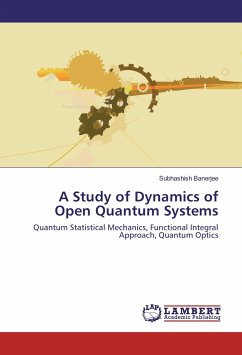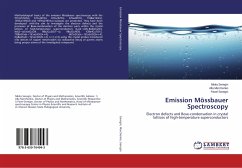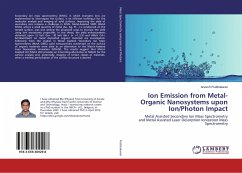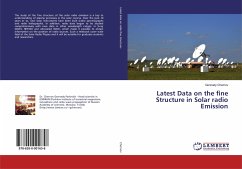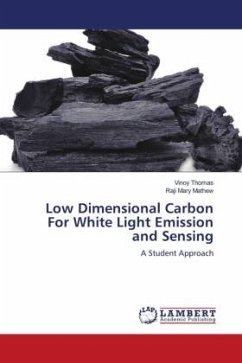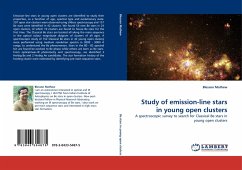
Study of emission-line stars in young open clusters
A spectroscopic survey to search for Classical Be stars in young open clusters
Versandkostenfrei!
Versandfertig in 6-10 Tagen
52,99 €
inkl. MwSt.

PAYBACK Punkte
26 °P sammeln!
Emission-line stars in young open clusters are identified to study their properties, as a function of age, spectral type and evolutionary state. 207 open star clusters were observed using slitless spectroscopy and 157 Be stars were identified in 42 clusters. We found 54 new Be stars in 24 open clusters, of which 19 clusters are found to house Be stars for the first time. The Classical Be stars are located all along the main sequence in the optical colour magnitude diagram of clusters of all ages. A spectroscopic study of 152 Classical Be stars in 42 young open clusters were performed using med...
Emission-line stars in young open clusters are identified to study their properties, as a function of age, spectral type and evolutionary state. 207 open star clusters were observed using slitless spectroscopy and 157 Be stars were identified in 42 clusters. We found 54 new Be stars in 24 open clusters, of which 19 clusters are found to house Be stars for the first time. The Classical Be stars are located all along the main sequence in the optical colour magnitude diagram of clusters of all ages. A spectroscopic study of 152 Classical Be stars in 42 young open clusters were performed using medium resolution spectra in 3800 - 9000 Å range, to understand the Be phenomenon. Stars in the B0 - B2 spectral bin are found be evolved to Be phase while others are born as Be stars. From optical/near-IR photometry and spectroscopy, we identified 3 Herbig Be and 2 Herbig Ae candidates. The star formation history of the hosting cluster were estimated by identifying pre-main sequence stars.




